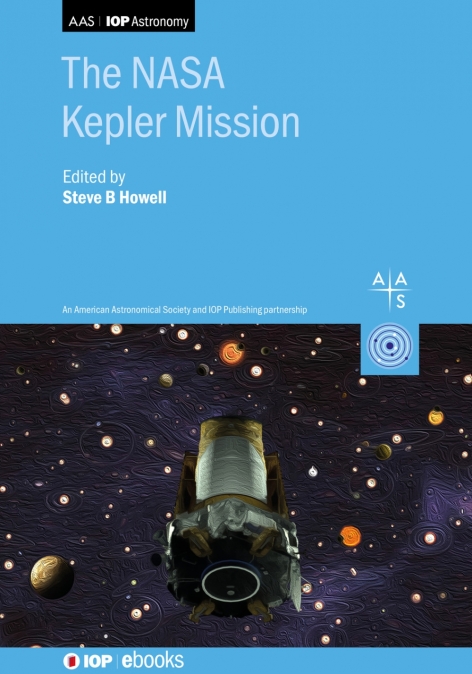New AAS-IOP eBook: "The NASA Kepler Mission"

Richard Fienberg Running Hare Observatory
This announcement is adapted from an Iowa State University press release:
 NASA’s Kepler mission was all about finding planets outside our solar system, but it also revitalized the study of stars. “Stellar astrophysics underwent a rebirth due to the NASA Kepler and K2 missions,” says the introduction to a chapter on star studies in a new ebook for graduate students and others in the astronomy community. The NASA Kepler Mission, edited by Steve Howell of NASA's Ames Research Center and published through a partnership between the AAS and IOP Publishing, is now available.
NASA’s Kepler mission was all about finding planets outside our solar system, but it also revitalized the study of stars. “Stellar astrophysics underwent a rebirth due to the NASA Kepler and K2 missions,” says the introduction to a chapter on star studies in a new ebook for graduate students and others in the astronomy community. The NASA Kepler Mission, edited by Steve Howell of NASA's Ames Research Center and published through a partnership between the AAS and IOP Publishing, is now available.
“It was more than a revival; it was an absolute revolution,” said Steve Kawaler of Iowa State University. Kawaler is co-leader of a Kepler star-studying investigation, chair of the editorial advisory board of the AAS-IOP astronomy ebook program, and a contributor to the Kepler book.
“Before Kepler, we’d study interesting stars,” he says. “We’d pick a star and study it for six months or a year and write a paper Kepler observed 50 interesting stars every minute.”
Kepler rocketed into orbit on 6 March 2009, from Cape Canaveral Air Force Station in Florida. The spacecraft was essentially a 95-megapixel digital video camera aimed at the Cygnus-Lyra region of the Milky Way. Its primary job was to detect tiny dips in the brightness of stars. Those dips could signify a planet transiting in front of its host star.
About four years into its planet-hunting mission, the Kepler spacecraft malfunctioned and lost its ability to stay pointed at one area of the galaxy. But scientists and engineers found a way to keep the spacecraft pointed at one spot in the plane of the solar system for about three months at a time, thus embarking on a new mission called K2. That mission collected more data about planets, as well as data about stars, comets, asteroids, dwarf planets, ice giants, and moons.
On 30 October 2018, NASA announced that the spacecraft was out of fuel and would be retired and left to safely orbit the Sun. Its two missions featured the discovery of 2,600 planets beyond our solar system.
While it looked for planets, Kepler also collected loads of data on more than 100,000 stars. As Kawaler notes in the book’s overview of asteroseismology — the measurement of a star’s oscillations, or starquakes, which appear as changes in brightness that are related to the star's internal structure — these observations led to important results in many areas of stellar astrophysics, including star clusters, young stars, dying stars, and multiple-star systems.
“Exoplanet discoveries by the thousands, alien solar systems to boggle the mind, and planets that even theorists could not dream up," writes Howell of the Kepler-K2 legacy. "Unique observations of stars, solar system objects, and faraway galaxies round out the paradigm changing scientific discoveries of these two NASA missions.”
The NASA Kepler Mission is available on the AAS-IOP ebook website; if you’re affiliated with an institution that has a research library, you may be able to download the book for free via an institutional account. AAS members are entitled to a 30% discount on individual copies of the book, which are available for purchase in the IOP Publishing bookstore.

